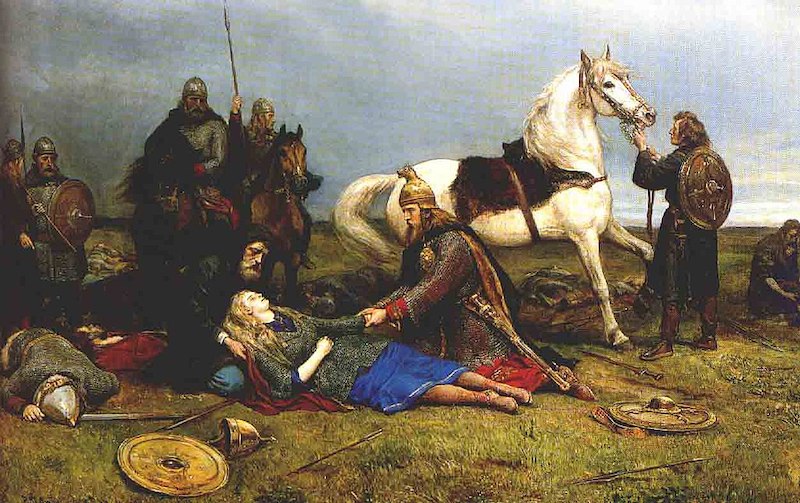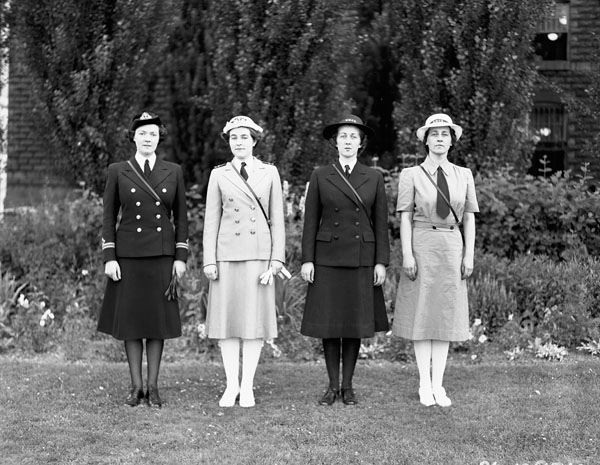 With International Women’s Day coming up we thought we would highlight women in our community.
With International Women’s Day coming up we thought we would highlight women in our community.
They’re heavily adorned in gear, boots, helmets, and carrying arms. Soldiers in combat move together, as a team. At first glance, Canadian troops appear today much as they did twenty-five years ago.
A second look, however, reveals a subtle difference in the faces on the front lines. Women represent 15 per cent (2016 stats) of the Canadian Armed Forces. According to the Government of Canada website women represent 16.3 per cent as of April 2022. Many of whom have served on the front lines in Afghanistan. Two percent, about 250 in 14,000 of combat arms troops are women.

Combat Arms
In the Canadian Army, “Combat Arms” refers to the four combat-focused occupations: armour, artillery, infantry and engineer. These trades are directly involved in combat. Though low compared to men, the number of women in combat is growing.
Most other countries do not allow women in combat. The United States only recently lifted the ban on women in combat trades and will begin training women for combat roles in 2016. Canada’s mission to Afghanistan saw the largest number of women in combat in Canadian history.
“My goal was to gather these stories and share them with the Canadian public,” says Krystel Chapman, PhD candidate at the Royal Military College (RMC) in Kingston, Ont. and Canadian Armed Forces (CAF) Intelligence Officer. “After I was done all the research and interviewing all the women, I decided it was something I actually wanted to do myself.”

Inspired By 50 Female Soldiers
Chapman began her PhD in war study, and her thesis on women who served in combat in Afghanistan, as a civilian. So inspired by the 50 female soldiers she interviewed, Chapman took a year off from writing to become a soldier herself.
“It was extraordinary the breadth of things they got to do, and I thought to myself…I want to join these women, I want to do what they’ve had the opportunity to do,” says Chapman. Her father served in the infantry with the 22nd Regiment, but it wasn’t until she heard the women’s stories that she decided to join the military herself.
“The pride they had in themselves,” she says. “Seeing themselves as both warriors and humanitarians by the work they had done in Afghanistan, was really inspiring.”
Afghanistan brought many milestones to the history of women in combat. In 2010, one such milestone was not only a first for the Canadian military but also among allied forces. Major Eleanor Taylor became the first women to ever lead a Canadian infantry company in combat.

Shieldmaidens
“Afghanistan, in a sense, proved that women can get the job done as well as men,” Chapman says. “Before that (women in combat) was hypothetical and based on training, Afghanistan proved that it can be done in theatre.”
Women as warriors is not a new concept. The walls of history are hung with images of strong warrior women. Every culture has depicted a female warrior at one time or another. Joan of Arc, a Roman Catholic Saint, leading a charge while wielding a sword, is part of popular history.
The Japanese depict female samurai, the Irish tell of Grace O’Malley leading attacks on ships, Viking women chose to battle as “shieldmaidens”. However, “women as warriors” is a relatively new depiction in the modern world.

First World War: Bluebirds
Canada’s military history began with women playing a supportive, and active, role in times of war. Known as the “Nursing Sisters”, they were originally drawn from roles in the church. Canada’s Nursing Sisters first tended to Canadian troops in the field in 1885. During the North-West Rebellion, Canadian nurses were formally in service of the military for the first time. They were so valuable during battle that they were sent out with every military force onward. No longer referred to as “Nursing Sisters”, nurses in the Canadian Armed Forces remain highly regarded to present day.
The Canadian Army Medical Department was formed in 1899, along with the Canadian Army Nursing Service. Only women held positions in the Nursing Service. They were given pay and allowances relative to the rank of army lieutenant.
In the First World War, over 2,500 Canadian Nursing Sisters served overseas in the Canadian Army Medical Corps (CAMC). Of those, 53 were killed during the war. Working close to the front lines, they were often within range of enemy attack. Canadian hospitals were bombed twice, killing nurses in the line of duty. Fourteen nurses were killed when an enemy torpedo sank a Canadian hospital ship.
Clad in blue dresses and white veils, the nurses were nicknamed the “bluebirds”. They were the first to meet wounded soldiers returning from front lines, cleaning their wounds, offering comfort, and assisting in surgery. They also became affectionately known as “Sisters of Mercy” or “Angels of Mercy” by the soldiers. Women were not permitted to serve in other Canadian military roles during the First World War.

Second World War: Women’s Divisions Formed
Canadian women consistently lobbied the government for other active roles in the military. They were eager to serve their country in uniform. When the Second World War began, 7,000 women volunteered for unsanctioned women’s military training. The women trained unofficially for military duty within women’s groups. In 1941, the shortage of troops led to the sanctioning and establishment of the Royal Canadian Air Force Women’s Division (RCAF-WD). The very first female military service unit in North America. It forever changed the face of the Canadian military.
The women began their training for administrative and support roles in RCAF-WD under the slogan, “We serve that men may fly”. As the war progressed, though, they took on more roles such as rigging parachutes, working in laboratories, as well as doing mechanical work.
Within a year, women’s divisions were formed in the Army and Naval service. The Canadian Women’s Army Corps (CWAC) and the Women’s Royal Canadian Naval Service (WRCNS), known as “Wrens”, completed the women’s forces units.
Women were now serving formally in uniform. Over 50,000 women served in Second World War.
Nurse Elizabeth Lawrie Smellie was awarded the Royal Red Cross for her efforts overseas in the First World War. She served as the Matron in Chief of the Royal Canadian Army Medical Corps and laid the foundation for the Canadian Women’s Army Corps in the Second World War.
In 1944, Smellie was the first woman promoted to the rank of Colonel in the Canadian Army.
Her history is well documented, though the history of many others has gone undocumented. While women were helping the war effort overseas, they were also contributing on the home front. Women kept the households running. They were working jobs to support the war and their families.

Girls Behind the Guns
Canada’s largest fuse-filling munitions factory lay in Scarborough, Ontario during the Second World War. The top secret “GECO” plant sprawled across 346 acres and stood atop four kilometres of tunnels.
“I discovered after living in Scarborough for four decades, that there was an underground tunnel system,” notes Barbara Dickson, author of the book Bomb Girls – Trading Aprons for Ammo, published in October 2015.
“I was shocked,” says Dickson. “There were all these tunnels below the city, and no one else had heard about them.”
Dickson says she spent 10 years digging up files and doing interviews to ensure the history of the GECO plant is documented in her book. Much of the plant’s history was lost after the war.
GECO personnel often referred to their workers as the “Girls behind the guns.” The majority of the 21,000 plant employees were women. They were handling high explosives and gunpowder 24 hours a day for four years. They had one day off a week.
“There was a rumour at the time that the women handling these volatile substances in the factory would not be able to bare children afterward,” says Dickson. “They still wanted to work there.”
“They were incredibly proud and dedicated to be doing war work,” she says. “One of the substances they were working with was a highly toxic powder. Not only could they blow themselves up working with it, but it was toxic. It would stain their hands, their hair and their faces yellow.”
Regardless of the perils, the women were so happy to be working, Dickson says, that they were constantly singing while working and walking the halls.

Accepted into Combat Trades.
It wouldn’t be until 1989, nearly 50 years later, that women would be accepted into Canadian combat trades. The Canadian Charter of Rights and Freedoms opened the gates and women stepped onto the combat pitch.
The Canadian Armed Forces in Afghanistan marked the largest number of women in combat in Canadian history. The women on the front lines brought value allied forces were lacking.
“The Americans had to develop programs from the ground up because they didn’t have females deployed so far forward,” explained Chapman. “They would have to train special teams of women to speak with local women in Iraq and Afghanistan because male soldiers were not able to do that. If you look at Canada, we didn’t have to do that because we had female medics, we had female infantry or artillery soldiers who were already deployed forward. It was a definite advantage.”

Combat Missions
Even with the advantages, Afghanistan was a long and dangerous combat mission. Among the milestones, Captain Nichola Goddard became the first female CAF member to die in combat duty.
“Her death woke up Canadians to the fact that there are women in the combat arms,” Chapman notes. “They’ve earned the right to serve, and the right to die, for their country just like men have had since Confederation.”
Chapman says a key finding in her thesis is that women in combat relate to the warrior identity. She says the medics she interviewed also “identify strongly with the warrior image.” There is a long legacy of women in times of war. Women have pushed at barriers toward the front lines since the earliest Canadian battles.
“They feel like they’ve done it,” explains Chapman. “They feel like they’ve shown that women can perform very well in the combat arms.”
A hesitation to send women into combat is threaded throughout military history, a hesitation that has now began to unravel.









